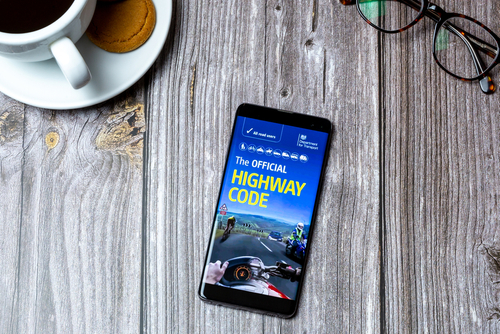
The Highway Code – New rules you need to know
Why is the Highway Code being changed?
The rules for all types of road users have been updated in The Highway Code to improve the safety of vulnerable road users such as people walking, cycling and riding horses.
The changes follow a public consultation on a review of The Highway Code to improve road safety for people walking, cycling and riding horses. It ran from July to October 2020, and received more than 20,000 responses from the public, businesses and other organisations.
Most people who responded were in favour of all the changes.
When do the changes come into place?
The changes were made to The Highway Code on Saturday 29 January 2022.
What are the changes?
The biggest Highway Code rule change is the new hierarchy of vehicles, which means the more damage your vehicle can do, the more responsibility you have to ensure you don’t put less-threatening road users at risk.
The hierarchy is now, in order of priority: pedestrians; cyclists; horse riders; motorcyclists; cars/taxis; vans/minibuses, with large passenger and heavy goods vehicles at the bottom.
The hierarchy has been split into 3 rules, H1, H2 and H3.
Rule H1 – Rule for all road users
This rule states:
It is important that ALL road users are aware of The Highway Code, are considerate to other road users and understand their responsibility for the safety of others.
Everyone suffers when road collisions occur, whether they are physically injured or not. But those in charge of vehicles that can cause the greatest harm in the event of a collision bear the greatest responsibility to take care and reduce the danger they pose to others.
This principle applies most strongly to drivers of large goods and passenger vehicles, vans/minibuses, cars/taxis and motorcycles.
Cyclists, horse riders and drivers of horse drawn vehicles likewise have a responsibility to reduce danger to pedestrians.
None of this detracts from the responsibility of ALL road users, including pedestrians, cyclists and horse riders, to have regard for their own and other road users’ safety.
Always remember that the people you encounter may have impaired sight, hearing or mobility and that this may not be obvious.
Rule H2 -Rule for drivers, motorcyclists, horse drawn vehicles, horse riders and cyclists
This rule states:
At a junction you should give way to pedestrians crossing or waiting to cross a road into which or from which you are turning.
You MUST give way to pedestrians on a zebra crossing, and to pedestrians and cyclists on a parallel crossing (see Rule 195).
Pedestrians have priority when on a zebra crossing, on a parallel crossing or at light controlled crossings when they have a green signal.
You should give way to pedestrians waiting to cross a zebra crossing, and to pedestrians and cyclists waiting to cross a parallel crossing.
Horse riders should also give way to pedestrians on a zebra crossing, and to pedestrians and cyclists on a parallel crossing.
Cyclists should give way to pedestrians on shared use cycle tracks and to horse riders on bridleways.
Only pedestrians may use the pavement. Pedestrians include wheelchair and mobility scooter users.
Pedestrians may use any part of the road and use cycle tracks as well as the pavement, unless there are signs prohibiting pedestrians.
Rule H3 – Rule for drivers and motorcyclists
This rule states:
You should not cut across cyclists, horse riders or horse drawn vehicles going ahead when you are turning into or out of a junction or changing direction or lane, just as you would not turn across the path of another motor vehicle.
This applies whether they are using a cycle lane, a cycle track, or riding ahead on the road and you should give way to them.
Do not turn at a junction if to do so would cause the cyclist, horse rider or horse drawn vehicle going straight ahead to stop or swerve.
You should stop and wait for a safe gap in the flow of cyclists if necessary. This includes when cyclists are:
- approaching, passing or moving off from a junction
- moving past or waiting alongside stationary or slow-moving traffic
- travelling around a roundabout
For a more detailed explanation of these changes please visit the government website by clicking here
If you would like to discuss your current fleet insurance with us or would like a new quotation please contact us below.
